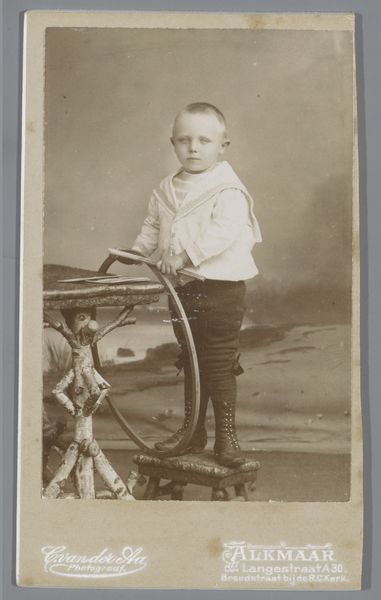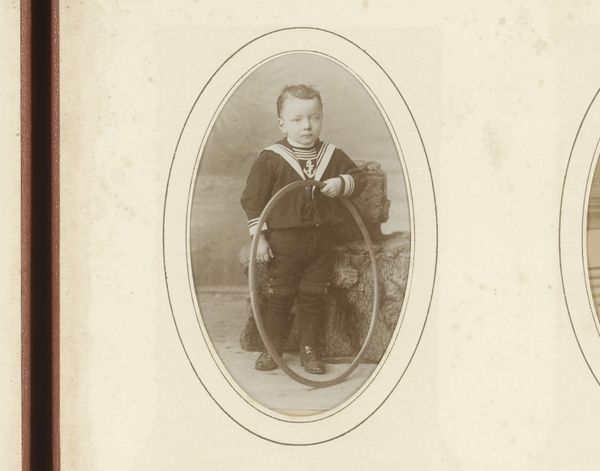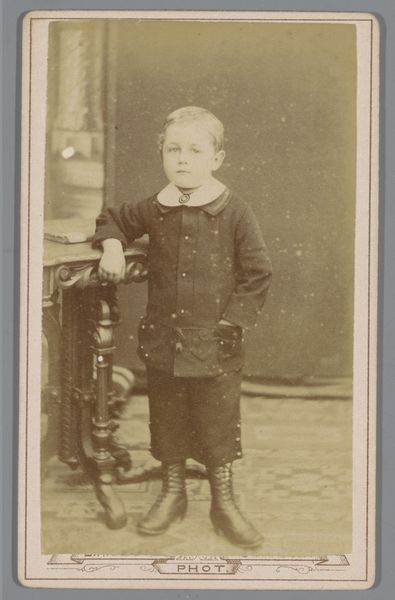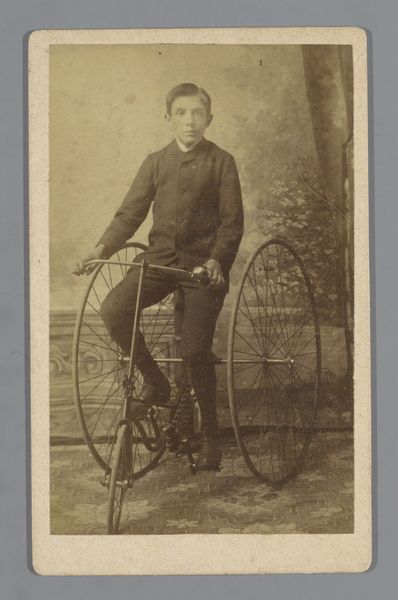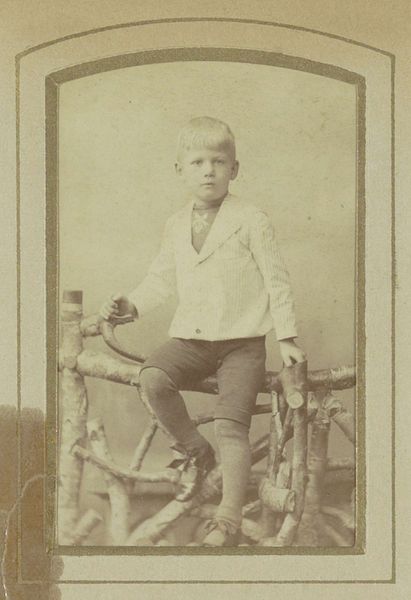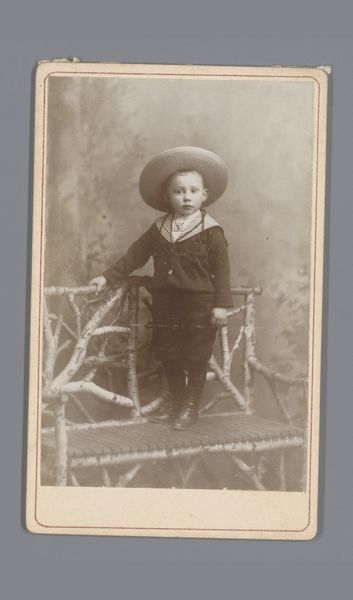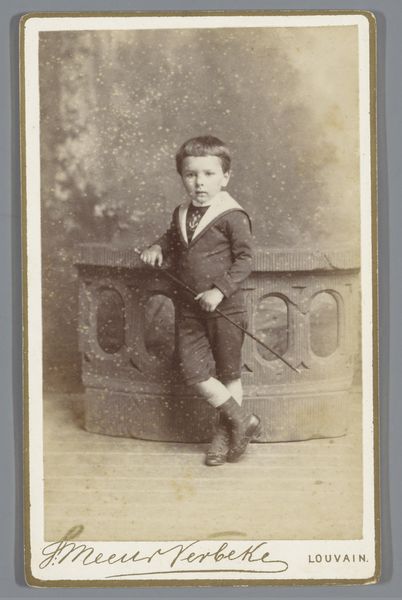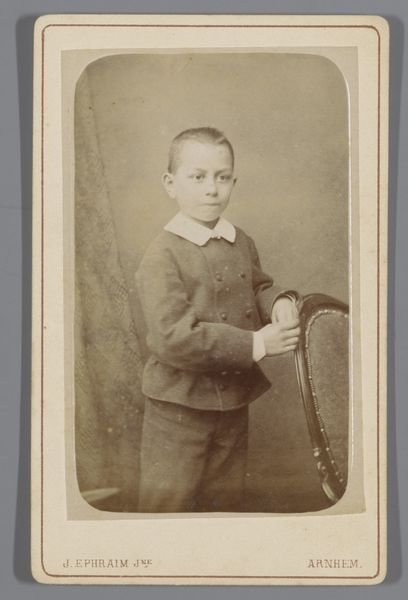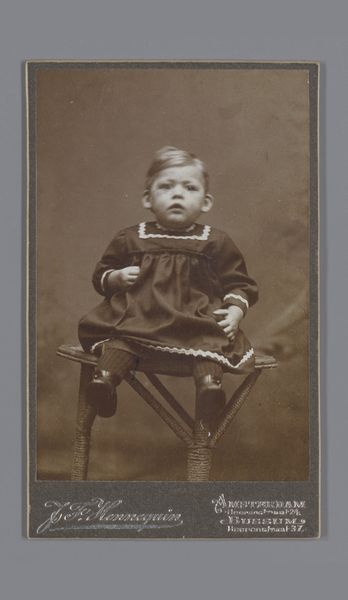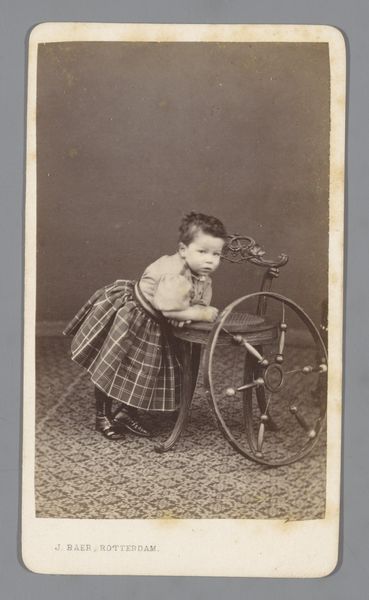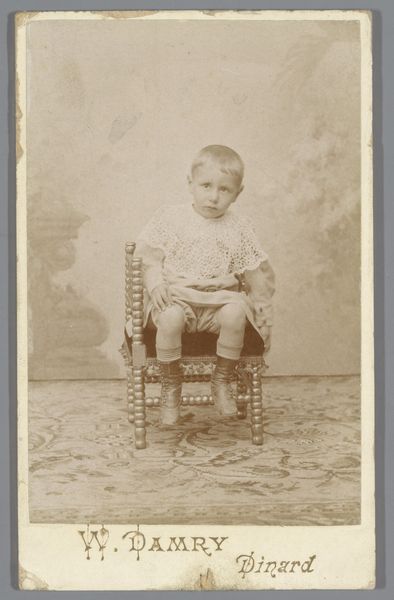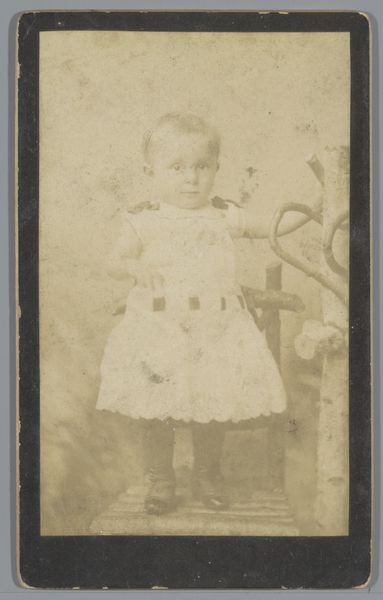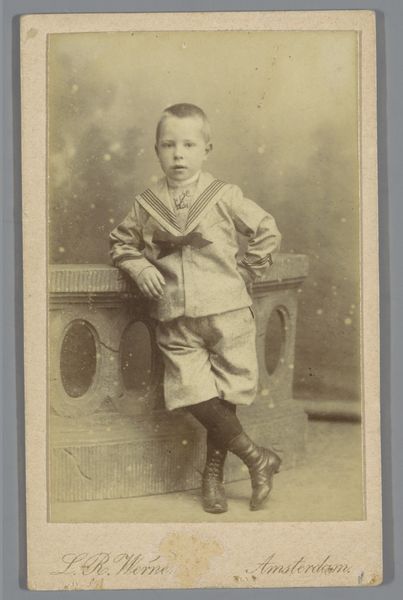
photography
#
portrait
#
vintage
#
photography
#
historical fashion
#
19th century
#
genre-painting
Dimensions: height 103 mm, width 63 mm
Copyright: Rijks Museum: Open Domain
Curator: This photograph, attributed to D.W.J. van Winsheijm, is titled "Portret van een onbekende jongen met speelgoed" and likely dates between 1890 and 1910. The "speelgoed," or toys, are immediately intriguing. Editor: There's a melancholy to it, isn't there? The somber clothing against the washed-out background. It speaks of a rigid upbringing, childhood tinged with seriousness. The toys seem almost props in a carefully constructed display. Curator: Consider the photographic process of the time. Wet plate collodion likely or perhaps early gelatin silver prints? These images demanded long exposure times and elaborate studio setups. A portrait was a statement of material value, more than merely about documenting likeness. Editor: Absolutely. It reflects societal values. Children in this era, especially boys, were symbolically burdened with the expectations of future manhood and continuation of legacy, even if, as here, it may simply speak to their family's aspirations and resources. Look at his sturdy shoes – the practicality, hinting at work to come. The circular toy dominates the visual plane—what significance can we draw? The circle can be seen as representative of a holistic worldview and the toy itself points to ingenuity, resourcefulness, and manual labour. Curator: A crucial element is the class dimension. This child’s dark suit, though not ostentatious, denotes middle or even upper-middle-class status, sharply distinct from the children of the industrial working classes, whose playthings—if they had them—would look quite different. This is an important observation considering who would typically be the customer for photographs. It's an exercise in societal projection, an artifact in capitalist aspiration. Editor: And what about the unsmiling face? Was it the discomfort of posing for long stretches, or an intentional reflection of virtues such as steadfastness that society imposed upon its young? I wonder about the internal lives of such boys... and, equally, of girls relegated to even narrower visual roles at the time. Curator: His very clothes become symbols of respectability and industriousness. Photography helped propagate and solidify the bourgeois ideal, offering physical markers of an era valuing self-improvement. Editor: Thinking about it now, these starkly lit images prompt me to rethink modern conceptions of child development as wholly free. There's an uncomfortable collision of societal expectation with something we like to see as natural. Thanks for this fresh perspective. Curator: The material conditions and photographic techniques frame our perceptions in lasting ways; they can remind us to challenge sentimental narratives of childhood by confronting difficult class disparities in historical memory.
Comments
No comments
Be the first to comment and join the conversation on the ultimate creative platform.
